What bulb adapters do I need to install HID or LED bulbs?
With the large variety of vehicles on the roads these days, there tends to be quite the variety of bulb styles across many different makes and models of vehicles. The most common types you will find are your standard H11, 9005, 9006, H13, etc. for domestic vehicles, but with certain European vehicle platforms such as BMW, Volkswagen, Mercedes-Benz and so on, you'll find some bulb styles that may not be so familiar. In many cases an LED or HID bulb adapter is required to fit the aftermarket bulb into your original housing.
Most bulb styles, such as H11, are a direct replacement style bulb, meaning there are no additional adapters needed to mount the bulb to the headlight housing. Simply align the mounting tabs on the collar of the bulb and twist in a clockwise direction and your bulb will be seated in place!
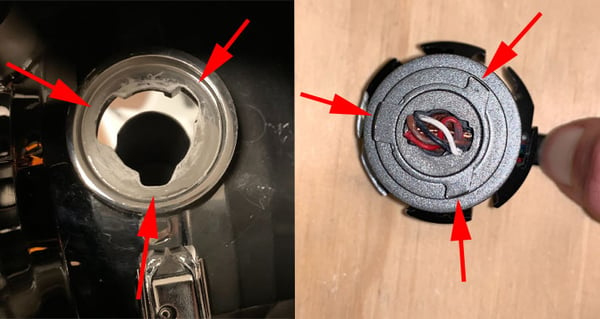
For a visual aid, here is the H11 socket of a Dodge Ram headlight on the left, and the mounting tabs on a decommissioned H11 LED bulb on the right.
If you have a vehicle that requires an additional adapter to mount a bulb in place, your headlight will look much different than the H11 setup will.
Let's say you drive a Volkswagen Golf MKII and you wish to replace your bulbs. You just pulled the headlight housing out of the vehicle, you flip it over and remove the dust cover just to find this bizarre looking wedge configuration tucked underneath.

Above is a photo of this Wedge-style bulb adapter mounted inside the headlight housing, just underneath the dust cover.
This wedge you see is the piece holding this H7 Halogen bulb in place! To remove this, simply twist counter-clockwise and pull towards you, it will come out with ease and attached to this wedge will be your H7 bulb.
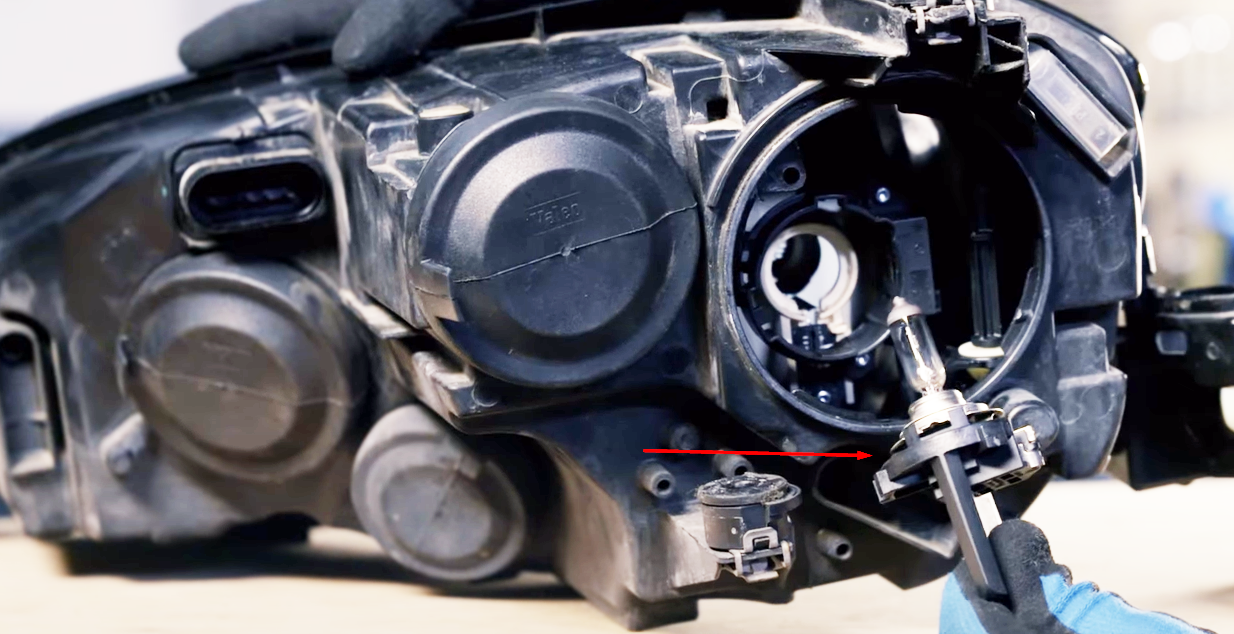
Above is a photo of the Wedge-style bulb adapter removed from the housing with the H7 bulb still seated inside.
Now that you have this portion completed, you'll be able to get a better idea on just what is going on inside this housing, and just how that odd adapter works! You'll see the odd formation of tabs along the outer ring of the adapter that lock into their respective channels, as well as two metal tabs off to one side of the adapter. What are these you may ask? These are your contact points for the positive and negative contact points for powering the bulb.! The H7 bulb itself will have two metal tabs coming directly off of the back of the bulb, being the positive and negative polarities. But since you need this additional adapter to mount the bulb, the contact points on the bulb need to align with the contact points on the adapter in order to allow everything to properly function!
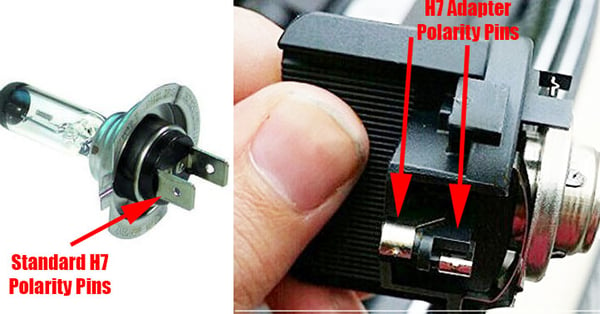
See the photo above of the polarity tabs on the standard H7 bulb compared to a H7 adapter.
This is an example of just one type of bulb adapter, there are many many forms of these adapters for different bulb styles and makes of vehicles, they are not stuck to just being these odd wedge-style adapters. You'll find some that are circular, some with external wires, and even some that look like metal clips! All of these adapters do the same job in a similar fashion, just in slightly different ways.
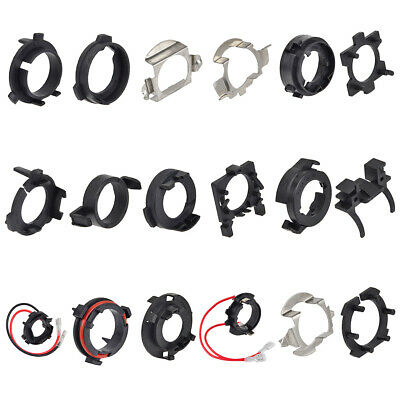
The photo above demonstrates a few different variations of H7 bulb adapters you'll find today.
Those looking to upgrade their halogen bulbs to an LED bulb with these adapters are in for a hard time, there are a few reasons why this is a tricky upgrade to complete. The main issue is how LED bulbs mount into a headlight housing. Most LED bulbs you'll find today have two pieces, the main bulb piece, and a separate LED driver. Unfortunately, these types of bulbs simply are not compatible with these adapters since the connector is separate from the bulb itself.
CLICK HERE to see all available bulb adapters!
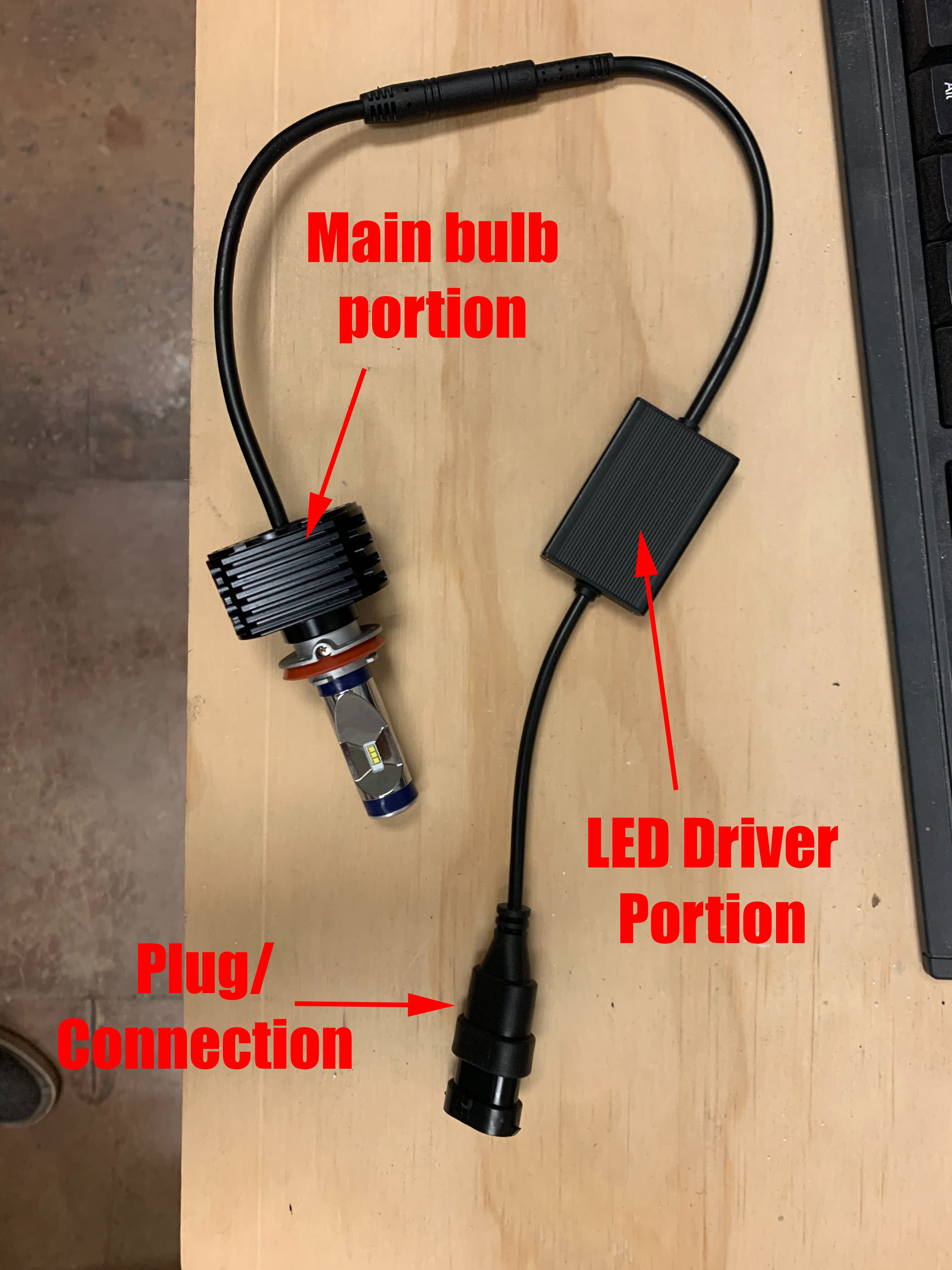
The photo above shows the characteristics of an LED bulb with an external LED driver and cooling system.
Since LED bulbs are not a solid one piece unit like the OEM halogen H7 bulb is, there is no way to plug this LED bulb into the adapter and lock it into the headlight housing, the bulb would just be loose in it's socket. There are some LEDs that are all one piece without the external LED driver, but these bulbs will not work either since they will have a cooling fan on the rear, or an external heat sink to cool the LED bulb off. This bulks up the design of the bulb, thus not allowing it to fit into the adapter.
Say you do find an adapter for your headlight, and you still really want to use LED bulbs. You're still going to be hard-pressed finding a good quality bulb that will fit with the adapter due to the many different characteristics in cooling techniques, as well as overall build traits and sizing differences you'll find across the thousands of different LED bulbs available today.
Don't hang your head in defeat quite yet, there is still hope! While LED bulbs may not be the most ideal route for you, there are always and HID option! An HID kit is easier to adapt for these unique headlight systems since they do not require an external cooling source, there tends to just be a relay harness, a couple ballasts/Igniters, as well as the HID bulbs themselves. There are unique HID bulb adapters for many of these oddball headlight systems that fit right over top of the HID bulb and fit into the headlight adapter piece. The wiring from the HID bulb is then run through the adapter and out the back. This allows you to fully install the HID bulb and the adapter into the headlight, just like the OEM bulb was installed. See the link found here for a great video from Headlight Revolution referring to how these HID bulb adapters work, and how they typically will be installed with an HID kit.

From testing, we've found that the GTR Lighting Ultra series HID kit works well with these HID bulb adapters. The adapter fits the HID bulbs just like the OEM bulb setup did, and mounts in the identical fashion. You can find the link to the HID kit we are referring to with the link found here. For the HID bulb adapters, use the link found here.




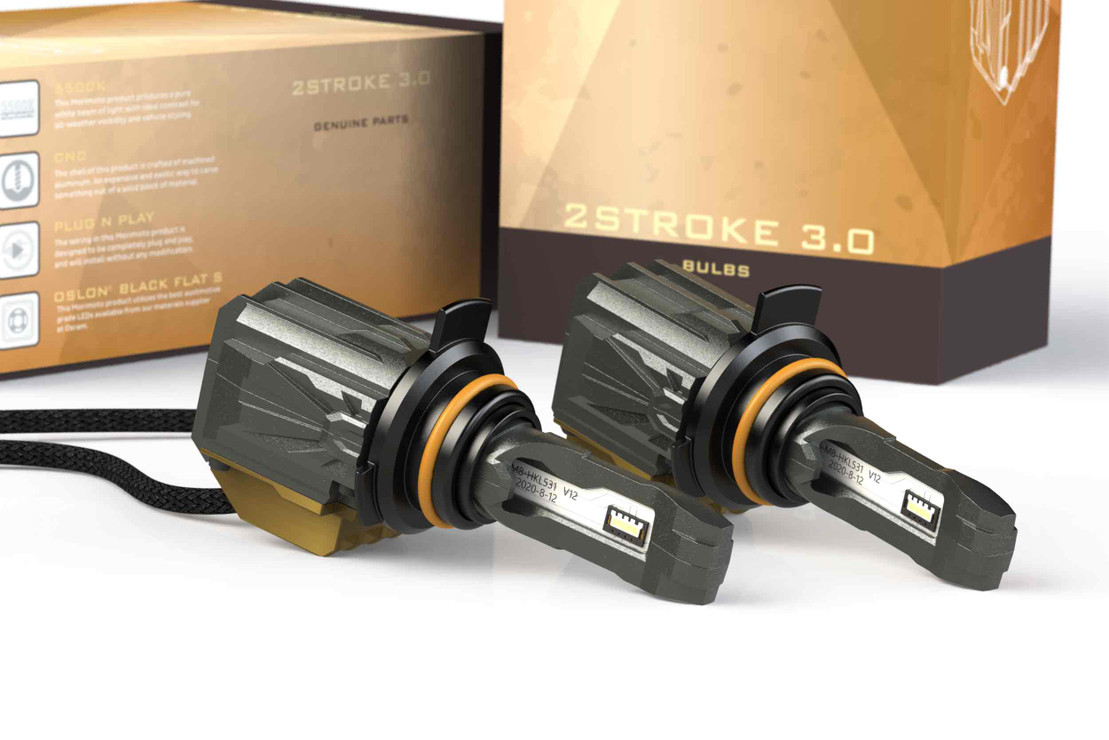


.png?width=300&height=87&name=logo%20(1).png)